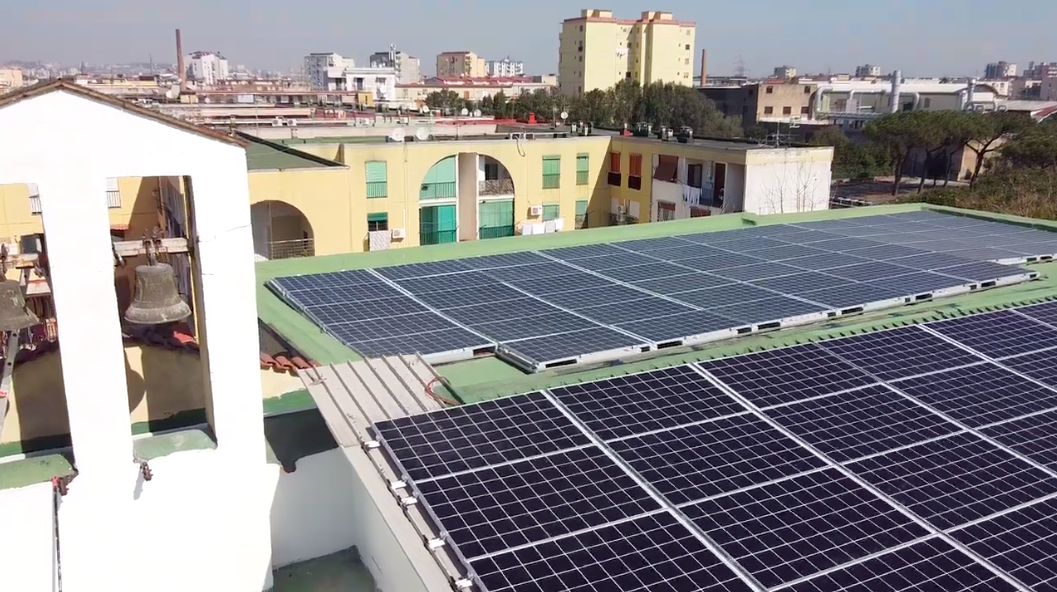The Solidarity Energy Community of East Naples in San Giovanni a Teduccio is pioneering a transformative approach to renewable energy that combines hands-on education with sustainable practices. Launched during the COVID-19 pandemic, this initiative empowers local families through energy efficiency workshops and community-driven projects, cultivating environmental awareness and social resilience. This initiative, which has overcome various hurdles, not only aims to tackle energy poverty but also to strengthen community bonds, demonstrating a blueprint for sustainable progress in vulnerable areas. We met the President of Legambiente Campania, Maria Teresa Imparato, to discuss the establishment, challenges and the activities of the Solidarity Energy Community of East Naples.
Could you tell us about the history of the Solidarity Energy Community of East Naples in San Giovanni a Teduccio
The story of the Solidarity Energy Community of East Naples in San Giovanni a Teduccio began during the period of COVID-19 pandemic, when the Italian Parliament had recently passed an amendment to initiate experimentation with energy communities in the country. Energy communities are collaborative ventures where citizens, businesses, and local entities come together to produce, share, and manage energy, fostering local resilience and sustainability.
Edoardo Zanchini, back then, the national vice president of Legambiente, an Italian environmental organisation focused on promoting environmental awareness and sustainability, recognised the transformative potential of this concept. During this period, he met with the president of Fondazione con il Sud, a foundation renowned for driving social impact through projects with non-profit organisations, and he introduced the idea of energy communities as a new tool for Italy, emphasising how these could revolutionise energy access and empower local communities.
The foundation’s president was immediately taken with the concept, and a few weeks later asked Zanchini to identify an area where this idea could be tested. Seeing the potential for significant impact, Zanchini proposed starting in Campania, and he reached out to me, as the president of Legambiente Campania.
How did you set up the project with the partners? What were your aims?
To bring this vision to life, Legambiente and Fondazione con il Sud embarked on the mission to establish the Solidarity Energy Community of East Naples in San Giovanni a Teduccio, an area facing numerous socio-economic challenges, on the roof of the building of the Fondazione Famiglia di Maria. Fondazione Famiglia di Maria is an educational facility for disadvantaged minors and families.
This project aimed to not only address the energy needs of the local community by alleviating energy poverty — the inability of families or individuals to afford a basic set of energy goods and services, affecting their well-being — but also to serve as a powerful tool to empower residents with knowledge and responsibilities they previously lacked. The initiative also aspired fostering a sense of ownership over neglected community spaces, transforming San Giovanni a Teduccio into a lighthouse of hope and sustainable progress.
Why was the roof of the Fondazione Famiglia di Maria chosen as the starting point for the Solidarity Energy Community of East Naples in San Giovanni a Teduccio?
Identifying the building of the education centre as the core of the energy community was a straightforward decision for us. The Fondazione Famiglia di Maria, with its mission to combat educational poverty, stood out as the ideal location. This foundation is deeply involved in the social policies of the municipality and offers various projects aimed at empowering families and providing educational opportunities. Their initiatives include after-school programs for children and other community-supportive activities.

Our longstanding partnership with the Foundation, spanning several years, made the choice even more evident. We had collaborated on numerous initiatives, not just in education but also in environmental campaigns, such as the tree planting festival in their garden, and local beach clean-ups. These efforts had already established a strong alliance, making the Foundation a natural fit for our project.
Initially, President Anna Riccardi was a bit hesitant about the proposal. However, the potential of creating a model that could gain widespread recognition convinced her to support the idea. We started by conducting preliminary surveys to ensure the feasibility of the installation, partnering with a local Neapolitan company for technical guidance, 3E, which offers innovation in the development and management of photovoltaic systems. Once we had the green light, we drafted a plan for what we envisioned as a highly experimental process.
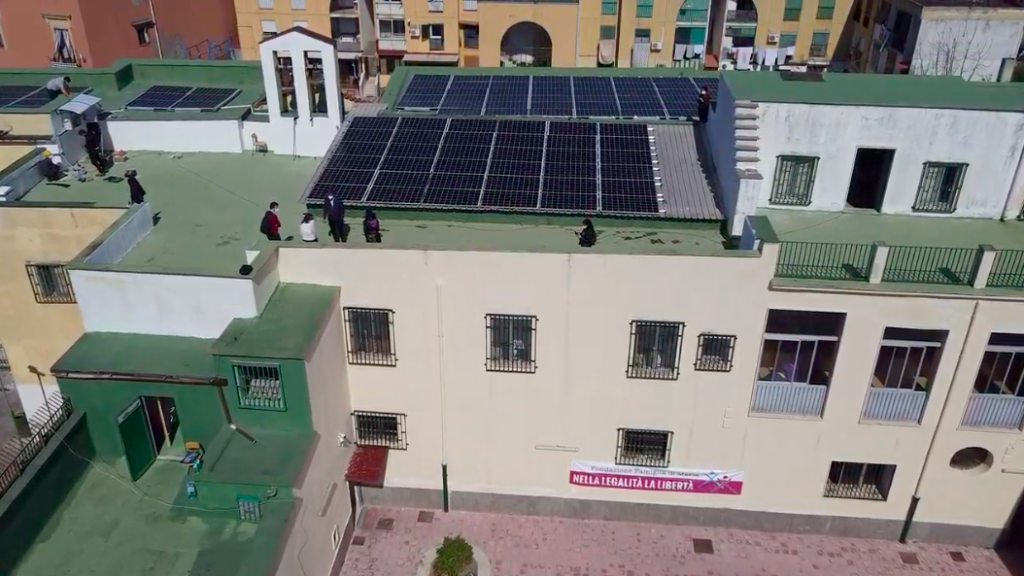
Throughout this journey, we learned to approach the concept of energy communities from an environmental perspective, while Anna focused on the social implications: “This collaboration allowed us to create a dynamic model that integrated both environmental and social elements, setting the foundation for a successful energy community”.
How did the community respond to the idea of a Solidarity Energy Community?
Despite the challenges in the neighbourhood, there exists a strong social network, which we leveraged from developing this project. Initially, families in the area struggled to understand the concept of an energy community. The early meetings with mothers were difficult, as we had to introduce this entirely new idea. Fortunately, the trust between the Foundation’s President and the families who were already involved in various activities, played a crucial role. Their participation helped spread awareness throughout the neighbourhood, and the mothers who engaged in our programs became more environmentally conscious, leading to lifestyle changes beyond economic benefits.
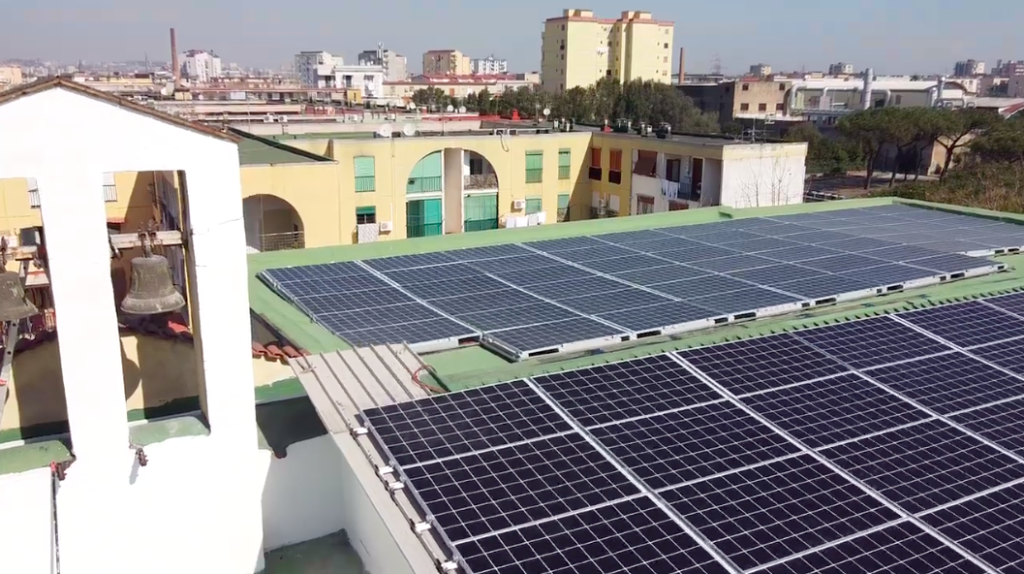
At the start, the promise of economic benefits, like distributing incentives among community members, helped gain trust. Although initial scepticism existed, San Giovanni a Teduccio quickly became a hub for journalists and researchers, raising awareness. The families began to understand that they were part of the community for both environmental and economic reasons, a crucial realisation in such a fragile context.
Our journey began with just three members and then further expanded to 40 families. Alongside this growth, we provided environmental and energy education programs, open to all, which helped spread the project’s impact. For instance, we organised a Christmas play featuring children dressed as solar panels. These efforts created significant secondary impacts, raising awareness and changing behaviours more than generating economic gains.
What challenges did you face in establishing the Solidarity Energy Community of East Naples?
During the establishment of the Solidarity Energy Community of East Naples we have encountered various difficulties ranging from data verification and bureaucratic roadblocks to delays in the distribution of the energy income.
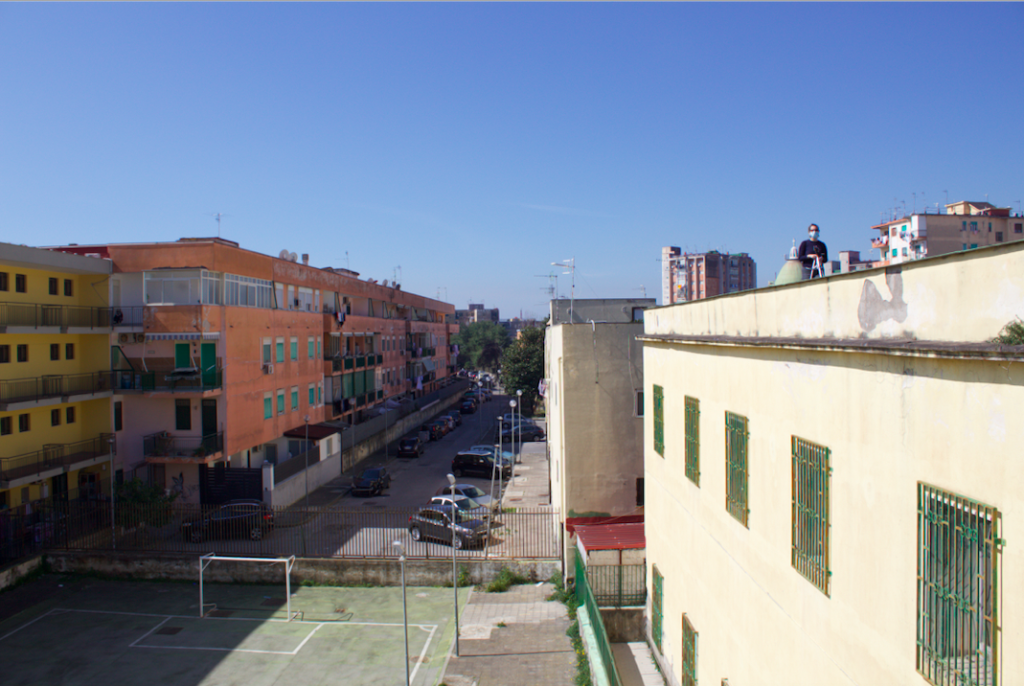
The first issue was obtaining information to verify if the families identified to become members of the community were connected, at that time, to the same secondary substation. The secondary substation is a facility within an electrical distribution network that transforms high-voltage electricity from primary stations down to lower voltages that are suitable for distribution to homes and businesses. These are typically located closer to the consumers than primary substations. However, the Legislative Decree 199/2021 that implements the RED II directive and establishes the comprehensive regulatory framework for the development of renewable energy communities in Italy extended the connection to the primary substations expanding the catchment area which allows us to increase the number of the members.
Another obstacle came from the heritage authority after the installation of the PV panels asking to dismantle them. The process was stalled for six months before we could get approval and connect to the system.
Despite already gaining international attention, including a visit from a U.S. delegate and BBC media coverage, we could not use our solar energy due to additional bureaucratic hurdles. An energy community once established needs to register to the Energy Services Managers (GSE), the guarantor and promoter of the country’s sustainable development, to be able to access the energy income. In this regard, our application was rejected due to minor issues, forcing us to restart the process and causing additional delays.
Lastly, we have also encountered delays in the distribution of the energy income. Luckily, our project was fully funded by Fondazione con il Sud, so there is no need to provide a return on investments as in the case if you rely on bank funding.
All these hurdles discourage stakeholders from starting and participating in energy communities despite the model’s potential.
How are community incentives managed, and how do members participate in decision-making?
Each energy community can choose according to their internal statutes how to redistribute the incentives. In the Solidarity Energy Community of East Naples we redistribute them through reimbursements on regular bill payments.
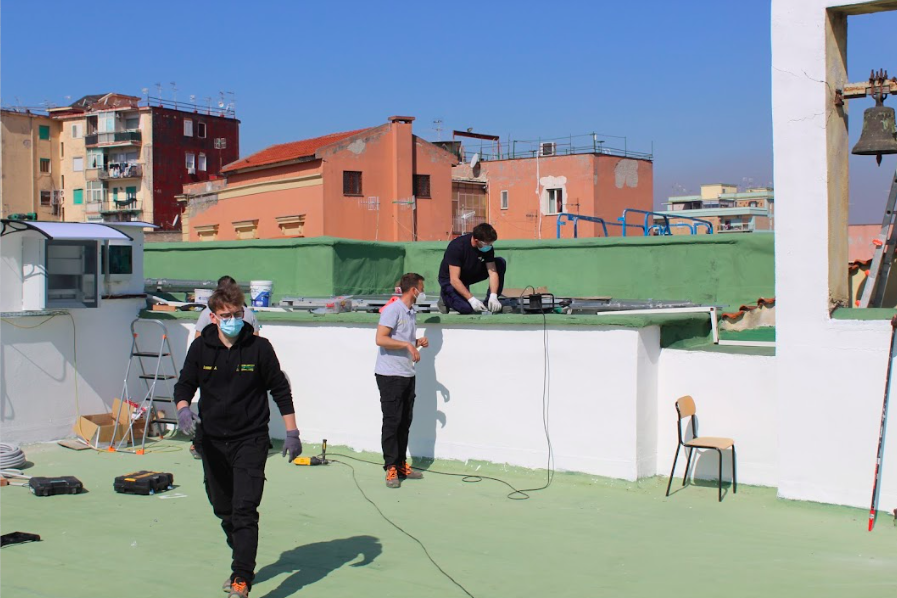
Decisions, instead, are usually made during community assemblies, where every member has a voice. Although, as previously mentioned, our governance structure resembles that of a third-sector organisation, with a board, a president, a treasurer, and an assembly for decision-making. However, participation extends beyond attending assemblies and voting. Members are also encouraged to promote efficient energy use at home, sharing tips on self-consumption and daily energy saving practices.
Lastly, the Foundation helps to streamline the discussions, requests and all the needs and acts as a convenient and accessible service point.
How have energy efficiency programs impacted the families in San Giovanni a Teduccio, and how have their motivations and engagement changed over time?
In a neighbourhood in which the ordinary family is composed of a mother with four kids at home and her husband in jail, it can be easily said that managing energy use and the environment is not a top priority.
However, with our hands-on approach of informal educational methods and materials we help families to identify their most-used appliances and illustrate their energy consumption, especially focusing on older devices. We have also conducted workshops using thermal imaging to reveal heat loss in their homes. Although structural changes are not directly feasible in public housing, if not implemented by the local authority, we offer practical tips for improving energy efficiency. These workshops have been invaluable, especially for families unfamiliar with these concepts. Through these we build trust and show them how they could economically benefit from making just simple adjustments in their home independently.
Indeed, at the beginning families joined the energy community mainly for financial reasons. However, over the course of the energy program and workshops their involvement deepened. They eventually began to understand the environmental impact and the broader value of their engagement and their focus shifted from merely economical to recognizing the importance of environmental stewardship. This is also discernible due to the fact that even after nearly four years these families have only received €250, the bond among them has grown strong.
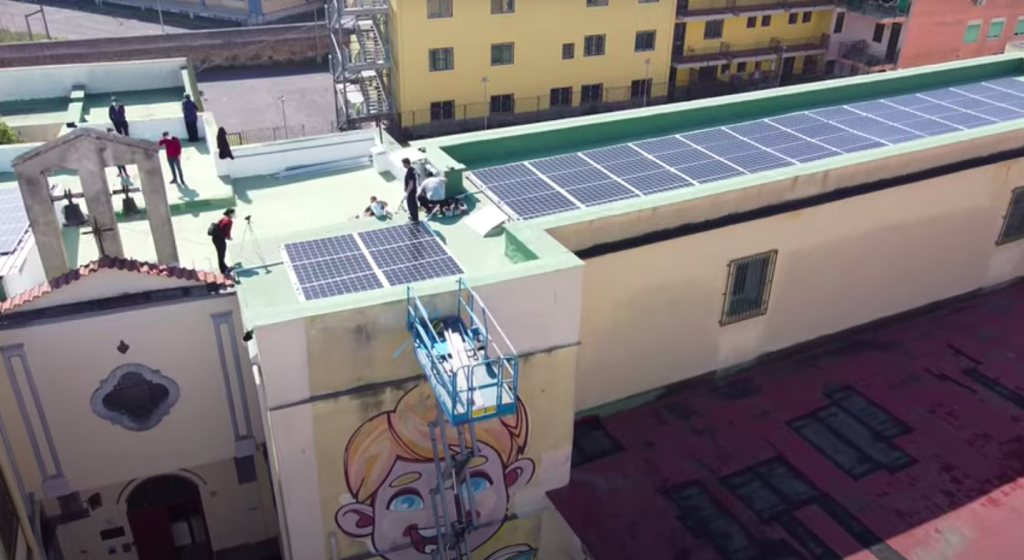
Importantly, some families with the knowledge about environmental impacts have participated in various pro-environmental activities. Additionally, Gennaro Mondragone, a child who regularly attends the Foundation’s activities, was honoured as an Alfiere della Repubblica (Standard-Bearer of the Republic) by President Mattarella for promoting the project within his neighbourhood.
What are the future plans for the Solidarity Energy Community of East Naples in San Giovanni a Teduccio?
Looking forward, the energy community in San Giovanni a Teduccio plans to extend its influence. Adjacent to the Foundation there is a primary and a high school. By acquiring resources to install solar panels on these schools, we can significantly enhance the impact of our energy community. Our community is inherently educational, and the collaboration between the Foundation and these schools would create a continuous pathway for generating lasting value.

